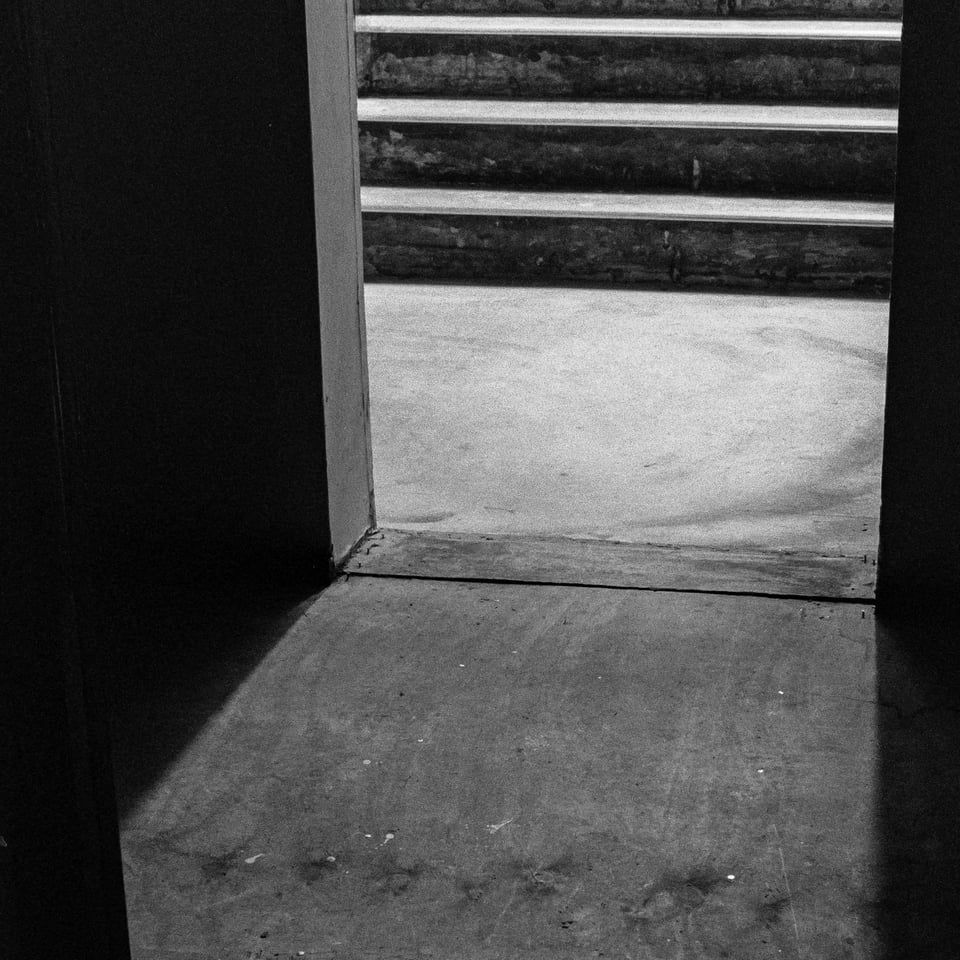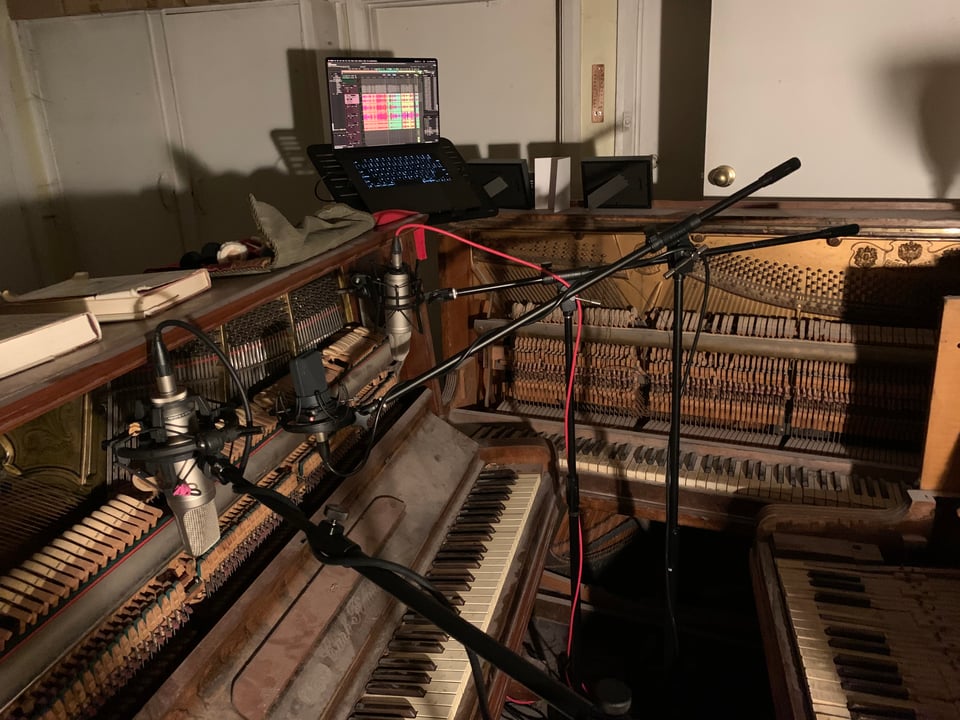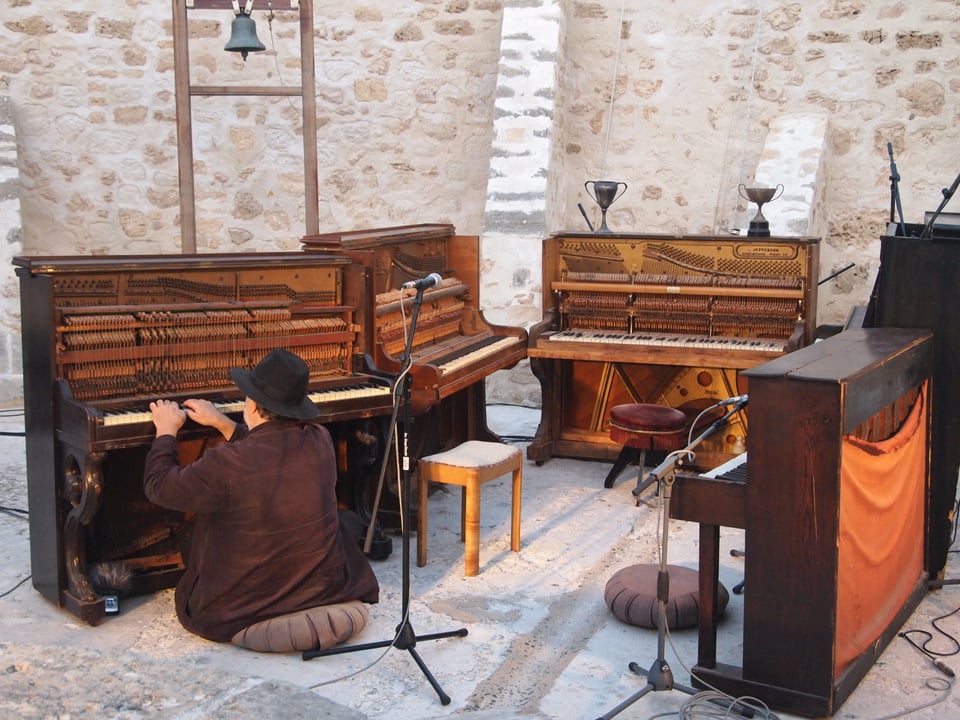It ends in a crypt
An album made with the ruined pianos of Ross Bolleter

It ends in a crypt is an album of works for five ruined pianos under the custodianship of Boorloo/Perth musician, writer, and Zen teacher, Ross Bolleter. Described by The Wire as “a true original of Australian composition,” Bolleter has collected and performed with these pianos for nearly four decades, weathered by the environment around western and central Australia. Crypt marks a rare opportunity for someone of a younger generation to learn and record with these remarkable instruments. It also marks ten years of a profoundly meaningful collaboration and friendship to me. It is out today; I hope you enjoy it.
During the British invasion of so-called Australia, hundreds of thousands of pianos were imported in an attempt to enforce European cultural hegemony on the continent. These all detuned or buckled under the climate. This in turn drove the largest piano manufacturing industry in the history of the British Empire, an industry wracked with white nationalist fervour, “Made for Australian Conditions” embossed on their cast iron plates. Prime ministers opened piano factories and said that nation-building starts with its music, its instruments. At the zenith of the piano’s popularity, when the settler state of Australia was barely adolescent, there were some 700,000 pianos owned by a settler population of just three million.
Over the century hence, these pianos were either begrudgingly passed down the family, sent to the tip, or left to ruin. In arid western and central Australian conditions, these latter pianos come to ruin in a particularly resonant way, sounding at turns like gamelan, raucous percussion, or simply nothing, the keys’ mechanics too devastated to budge. Natural processes of up to 50° heat, dust storms, near-permanent low humidity, and flash floods effectively ‘prepared’ the pianos. But unlike the more traditional prepared piano, where objects are intentionally wedged into the strings to produce unusual sounds, the ruined piano is played as is with no additional tampering. On a timbral level, they are extraordinary, but they activate something more profound on a poetic level. Playing them is as much an invitation to dwell on decay and the futility of European empire on a continent whose sovereignty and law was never up for grabs, as it is about evoking their plaintive, labyrinthine soundworlds.
Over nearly forty years, Ross has collected and recorded these pianos, found across the continent in cattle stations, tractor sheds, derelict pubs, or straightforward backyard neglect. His music based on these instruments has been praised worldwide, and he is cited as a preeminent figure of Australia’s outsider avant-garde. It is, to me, one of the most beautiful and evocative musical practices this continent’s settler population has produced, connected to place, colonial reckoning, equanimity, and anti-virtuosity.

If you’re looking for a place to start in his discography, I usually suggest the track “Time and Fevers Burn Away,” a recording made by sneaking into a then boarded-up Masonic Hall in the small town of Cue, in the mid west of Western Australia (Rob Castiglione’s documentary on Ross, An Invitation to Ruin, has a lovely sequence of recording in this space). Another melancholy favourite is “Speak Love.” Secret Sandhills and Satellites (2006) is a classic of Australian experimental music. At 79, he releases about an album a year, most recently in collaborations with Eduardo Cossio, Antoinette Carrier, and Sylvain Roux. Some of these releases come out through his homespun label WARPS (World Association of Ruined Piano Studies) co-founded with the late Stephen Scott (who developed the bowed piano technique). Apparently John Cage had a CD with his work on it, but who knows whether he listened to it. I’m sure he would’ve loved it, both students of Zen.
I have been Ross’ recording engineer for ten years as of 5 June, the release date of this album, and through that time we have developed a good collaborative friendship, 46 years apart in age but both intensely passionate about experimental musical tradition, pianism, teaching, writing, the intersections of Zen and Spinoza, and so on. Ross generously cut me keys to his house—his kitchen houses five ruined pianos—to record the pianos while he went to Europe to, among other things, take part in the disinterment of a piano from the crypt of Spanish avant-garde artist, Juan Hidalgo. Ross’ synopsis of the trip became the album title. The album was recorded over eight nights in Kambarang, the Noongar season of flowering and birth, 2024.

Three concepts I dwelled on in realising this album. One is questioning the narrative that performing with these instruments is ‘anti-colonial’ or a rejection of European cultural imperialism. This is a tempting narrative, but is probably better understood as what Tuck and Yang call a “settler move to innocence,” a discursive or aesthetic posturing that settlers use to absolve themselves of the material struggle against the colonial project that they benefit from. I think this frame is inescapable on this album; it’s not a radical or restitutional thing. I don’t think it needs to be. That said, a lot of people heavily invested in European cultural hegemony take great offence to the ruined piano. One scholar recently opened a book on pianos in Australia by saying the piano “brought civilisation to an uncivilised continent.” That is inordinately more barbaric than any kind of ruin that comes to these pianos.
Another is to do with attention. Listening to Ross’ music, it can be hard to follow a musical idea with a traditional sense of development, momentum or arc. It took some growing up to realise it’s okay for music to reject narrative and trajectory, and that relinquishing the urge to impose order and control on it is an important step towards whatever microcosm of liberation experimental music represents. There are many easy-to-follow figures in Crypt, but it gets most compelling when a certain threshold is passed, the labyrinth opens up and swallows you, and simply being with it, letting it pass, is the only option. Learning to let go of this clinging to attention has been an important step in my ongoing project of composition that is responsive to the attention economy and its psychological effects.
One more concept I must fumble through: pianism and its relevance today. I am interested in how proficiency at an instrument cultivates ways of knowing or seeing the world beyond the production of music. Some might call this musical expression, but that’s a drab term I align more with the repertoire of piano competitions and gimmicky MIDI controllers. There is more to pianism than emotional alchemy, I think. I also think that we limit ourselves by understanding pianism as contingent on the historically relatively stable object we call the piano. A ruined piano challenges pianism to confront its ignorances and revel in its sensitivities.
Something that bothers Ross and I is the assumption amongst Serious Musicians that Ross’ practice is deliberately coaxing ruin, or wielding these wrecks as cudgels against pianistic tradition. This couldn’t be further from the truth. Ross does have five ruined pianos in his kitchen, but in the living room is a Schumann grand, not a note out of tune, invariably with a Bach score on the stand. His full-time gig in the eighties was playing cocktail piano at a Hilton hotel. He’s a brilliant pianist in the normative sense. Ross’ practice does not herald the end of pianism any more than a sheep station family getting a piano from the old pub in a nearby ghost town, leaving it on a tennis court where it is hit by a flash flood, then keeping it henceforth in a tractor shed heralds the end of pianism. (This piano, “the Jefferson piano,” can be heard on the tracks “Fortitude” and “Muon noumenon.”) Rather, Ross’ invitation to ruin extends pianism outward, into poetic, cultural, even spiritual commentary beyond Eurocentric ideals. I’m always moved by this. It embodies an idea that the magical-material thinking of pianism can enable exploration of more pressing questions that aren’t accessible to those of us who weren’t practise room shut-ins, and that these questions have value beyond the inner trappings of music. Pianos as symbolic complexes are swept up in archetypes of total individual control, a certain liberal ethos to organising sound. Pianism in opposition to these received ideologies, committed to the perennial “what if?”, seems like important work.
More than anything, however, this is an homage to a nourishing and unlikely friendship. It’s the honour of a lifetime to work with Ross. I feel so lucky to be connected to this lineage. I dedicate this album to him, and to the Country of the First Nations that gave these instruments more meaning than a factory ever could.
I asked Ross if he would like to say anything about this release:
Michael Terren’s ruined piano composition It ends in a crypt (2025) takes the Ruined Piano enterprise in entirely fresh directions. Crypt espouses simplicity and directness: a refreshing change in a genre which has been justly criticised for its excessive complexity and obscurity. Terren brings a wide range of compositional approaches to the seven movements of Crypt, and by so doing he evokes a range of moods and feelings including: tenderness, solemnity, grief and release—amongst others. Most particularly, the seventh and concluding movement of Crypt—“In your shelter is my ruin”—feels timeless and profoundly moving.
Michael, thank you for your friendship and support over the last decade. It has inspired my work. Indeed, through your recording and production you have made much of that work possible. I have such good memories of our meetings on the Isle of Satchmos where we conjure ideas and images that inspire our music, and correspondingly are inspired by it. Thank you so much, Michael.

It ends in a crypt was recorded in Ross’ kitchen and produced by myself. It was mastered by Dan O’Connor at Encoder Sound. The album artwork is by Eduardo Cossio. Thank you both dearly.